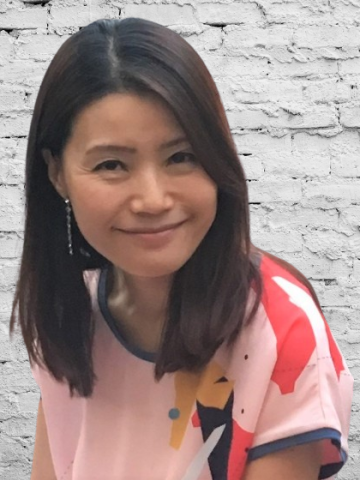
Minju Kim, Ph.D.
Department
Areas of Expertise
Teaching Interests
Korean Language and Culture
Research Interests
Pragmatics, Grammaticalization, Discourse Analysis, Language and Gender, Language Education
Education
B.A., M.A., Yonsei University; Ph.D., University of California, Los Angeles
Awards and Affiliations
President, International Circle of Korean Linguistics (ICKL)
Editor-in-Chief, The Korean Language in America (Journal of the American Association of Teachers of Korean)
Korea Foundation Field Research Grant (2025)
Research and Publications
Book: Grammaticalization in Korean: the Evolution of the Existential Verb, Saffron Korean Linguistics Series 5, Saffron Books: London (2011).
“Two Opposite Implicatures of a Focus Particle: Korean Stance Markers
with Focus ya,” Studies in Language (forthcoming)
“Secondary Grammaticalization and Subjectification: A Case Study of Korean Conditional, Concessive, and Deontic Modal eya,” Journal of Pragmatics 238 (2025), 86-100.
"A Study of English-Speaking Korean Learners' Acquisition of the Postposition to 'also'," co-authored with Young-Hyun Nam, The Korean Language in America (Journal of the American Association of Teachers of Korean) 27:1 (2024), 30-66.
"Development of the Korean Proximal Demonstrative into an Affective Stance Marker," Journal of Pragmatics 224 (2024), 1-19.
“Between Honorifics and Non-Honorifics: A Study of the Korean Semi-honorific Style and a Comparison with Japanese,” Discourse Studies 25:5 (2023), 664-691.
"Intersubjectivity, Stance, and Korean General Extenders," Journal of Pragmatics, 193 (2022), 253-268.
“Performing Gender in Korean: Language, Gender, and Social Change,” In John Whitman and Sungdai Cho (eds.), The Cambridge Handbook of Korean Linguistics, Cambridge: Cambridge University Press, (2022).
"The Story of Two Connectives: Korean tunci ‘or’ and kena ‘or’", Discourse Studies 23: 4 (2021), 497-518.
"Development of the Korean Connective ultheyntey into a Final Particle of Wishing and Worrying", Journal of Pragmatics 173 (2021), 51-65.
“From Connective Construction to Final Particle: The Emergence of the Korean Disapproval Marker hakonun,” Linguistics, 58:6 (2020), 1581–1607
"Korean General Extenders tunci ha and kena ha ‘or something’: Approximation, Hedging, and Pejorative Stance in Cross-linguistic Comparison,” Pragmatics, 30:4 (2020), 560-588
“From Connective to Final Particle: Korean tunci “or” and Cross-Linguistic Comparisons”, Journal of Pragmatics, 135 (2018), 24-38.
“Emergent Multiplicities of Self- and Other-Construction in Korean Workplace-Based Television Dramas” co-authored with Susan Strauss, Journal of Pragmatics, 137 (2018), 19-36.
“When topic meets ‘And’: Development of conditional and prohibitive constructions in Korean,” Discourse and Cognition, 25:1 (2018), 1-30.
“Women’s Talk, Mothers’ Work: Korean Mothers’ Address Terms, Solidarity, and Power,” Discourse Studies, 17:5 (2015), 551-582.
“From Choice to Counter-Expectation: Semantic-Pragmatic Connections of the Korean Disjunctive, Concessive, and Scalar Focus Particle -na,” Journal of Pragmatics, 80 (2015), 1-21.
“The Historical Development of the Korean Suffix –key,” In H. Sohn, H. Cook, W. O’Grady, L. Serafim, and S. Cheon (eds.), Japanese Korean Linguistics, 19 (2011). 435-448. Center for the Study of Language and Information/ Stanford University.
“On the Two Korean Sequential Connectives -kose and –konase,” In R. Fouser (ed.), Contemporary Korean Linguistics: International Perspectives, Seoul: Taehaksa (2010), 149-170.
“The Historical Development of Korean siph- "To Think" into Markers of Desire, Inference, and Similarity,” Journal of Pragmatics, 42:4 (2010), 1000-1016.
“hankwuke sisang kwumwunuy mwunpephwa [The Grammaticalization of Korean Tense-aspect Markers],” In S. Chung and C. Lee (eds.), Hankwuke yenkwuuy sayciphyeng [New Horizon of Korean Linguistics], Seoul: Taehaksa (2010), 151-184.
“The Intersection of the Perfective and Imperfective Domains: A Corpus-Based Study of the Grammaticalization of Korean Aspectual Markers,” Studies in Language, 33:1 (2009), 175-214.
“On the Semantic Derogation of Terms for Women in Korean, with Parallel Developments in Chinese and Japanese,” Korean Studies, University of Hawaii Press, 32 (2008), 148-176.
“A Corpus-based Study of the Grammaticalization of ‘Take’ in Korean: Focusing on the Developmental Paths into Instrumental, Sequential, and Causal Functions,” Korean Journal of Linguistics, 33:3 (2008), 387-420.
“The Emergence of the Korean Modal -keyss-: From Causative to Epistemic and Volitive Modal,” Discourse and Cognition, 15:2 (2008), 1-27.
“The Diachronic Development of the Korean Existential Verb iss-,” Korean Linguistics, 14 (2008), 91-111.
“A Corpus-based Study of the Grammaticalization of the Korean Connectives mye and myense: From Simultaneous to Quotative to Hearsay Evidential,” In M. Hudson, P. Sells, and S. Jun (eds.), Japanese Korean Linguistics, 13 (2008), 335-345, Center for the Study of Language and Information/ Stanford University.
“Cross-Adaptation of Language between Different Genders: The Case of Korean Kinship Terms Hyeng and Enni,” In S. Wertheim, A. Bailey, and M. Corston-Oliver (eds.), Engendering Communication: Proceedings of the Fifth Berkeley Women and Language Conference (1999), 271-283, Berkeley Women and Language Group/ University of California, Berkeley.
